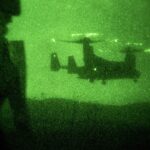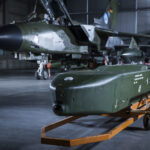It seems that the race between Airbus’ Eurofighter Typhoon and Boeing’s F/A-18E/F SuperHornet for replacing Germany’s aging Tornado fleet will end in a draw. According to German media reports, Berlin plans to acquire both airframes. The acquisition of both jets would be a compromise to protect the interests of the European defense industry and preserve the nuclear certification of the German Air Force. The German Defense Ministry has not dismissed the report but stated that the defense minister is yet to make an official decision.
If the compromise comes to pass, the German Air Force (or “Luftwaffe” in German) will receive at least 78 and up to 90 Eurofighter Typhoons. The American part of the deal will include a mix of approximately 30 F/A-18E/F SuperHornet and 15 E/A-18G Growler aircraft. The Luftwaffe needs the E/A-18G Growler to maintain its capability to conduct electronic attack (EA) and suppression of enemy air defense missions and the F/A-18E/F SuperHornet for nuclear certification after the retirement of the Cold War veteran Tornado. However, the two-fighter procurement plan could surge logistics and maintenance costs for the Luftwaffe in the long run.
In early 2019, Germany ruled out the F-35A fifth-generation multi-role stealth fighter for replacing the obsolete Tornado fleet. Most NATO countries (United States, United Kingdom, Italy, Norway, the Netherlands, Belgium, and Poland) are preferring the F-35A as their fighter jet for the next decades. The German armed forces were also reportedly pushing for getting the F-35. However, the German government has openly favored an upgraded Eurofighter Typhoon for commercial reasons. Airbus, the Eurofighter Typhoon producer is a joint French-German-Spanish venture, and the governments want to deepen their cooperation in the defense industry.
The decision for the Eurofighter Typhoon seemed to be a “done deal,” until German officials received information from the Pentagon about the timeframe for certifying the Eurofighter to carry nuclear weapons, according to DefenseNews. Getting the Eurofighter approved would take between three and five years longer than the F/A-18, which qualifies for nuclear strike missions.
Maintaining the Luftwaffe’s nuclear-delivery capability is key to Germany’s commitment to the NATO nuclear-burden sharing framework. This means that in case of war, German pilots will also equip their aircraft with American B-61 thermonuclear weapons and conduct airstrikes on enemy positions.
- Russia Bombs Maternity Ward & Children’s Hospital in Mariupol As Part of Siege - 10 March 2022
- T-Intell’s OSINT Training Marks One Year Anniversary - 18 November 2021
- IS-K Never Left the Battlefield - 27 August 2021









